Map
Locations













Black and white photo of five women in swimsuits and cover ups walking down Kentucky Avenue in Atlantic City, NJ.
Courtesy of Temple University Libraries, Charles L. Blockson Afro-American Collection
Photo from Historic Virginia Key Beach Park.
Photo from the CLOSE
Photo from the A.L. Lewis Museum
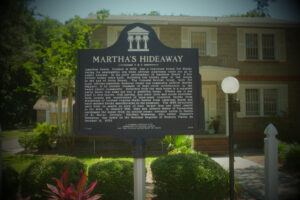
Photo from the A.L. Lewis Museum
During the American Revolution off the coast of Martha’s Vineyard young enslaved man Sharper Micheal saw British ships warning the island of the attack. This caused the ships to turn back making Sharper Micheal a hero of Martha’s Vineyard. He would later be the first islander killed in the Revolution.

Obrey Wendell “Winks” Hamlet was born in 1893 in Tenessee. By the age of 30, he and his family had moved to Five Points, a neighborhood in Denver, CO. There, Winks built himself up as an entrepreneur, establishing both a coal business and a moving company, the “Winks Moving Service.” In addition to these successes, Winks was one of the first to buy property at Lincoln Hills, and known as the Lincoln Hills sheriff. The photo above pictures Alberta, Clarence and Obrey Wendell “Winks” Hamlet standing in front of Winks Lodge.
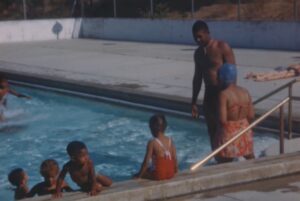

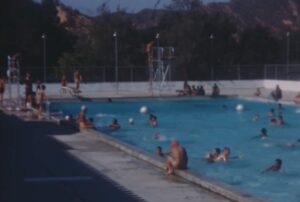
Images above are captured from the home video of the Golden State Mutual Life Insurance Company 22nd Anniversary Val Verde Park trip featured on this page. Courtesy of UCLA Golden State Mutual Life Insurance Company records.
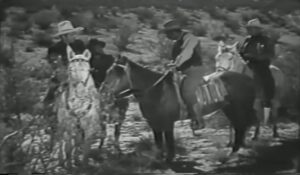

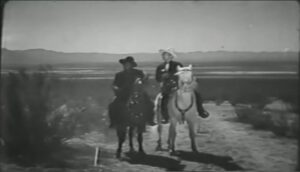
Harlem Rides the Range, a 1939 all-Black western film follows a homesteader named Jim Dennison as he faces financial trouble. With the help of cowboy Bob and his sidekick Dusty, Dennison confronts challenges from two men seeking his mine. The horses used in the film are part of the livestock of Murray’s ranch. National Museum of African American History and Culture.
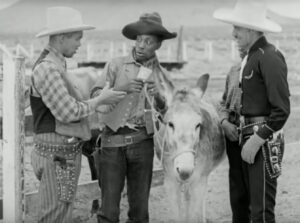

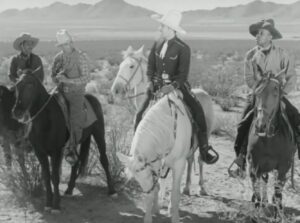
The Bronze Buckaroo, a 1939 all-Black western film follows four friends on their journey to find Joe, their friend who has gone missing. They eventually realize that Joe’s neighbors are holding him hostage over a land dispute. The horses used in the film are part of the livestock of Murray’s ranch. National Museum of African American History and Culture.

Joe Louis visited Murray’s Dude Ranch in 1937. The picture shows Louis sitting in a seat, chatting with Leon Washington of the Los Angeles Sentinel. Life Magazine Nov. 15 1937.
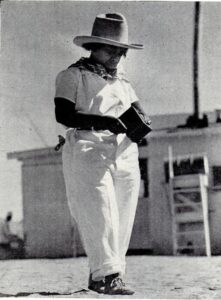
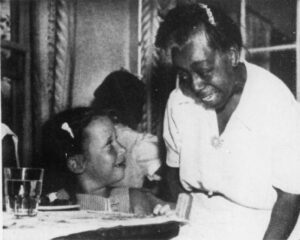
Lela Murray, a registered nurse, had a passion for caring for young children with respiratory ailments on the ranch and was known for her disarming personality. Ebony Magazine Feb. 1947.
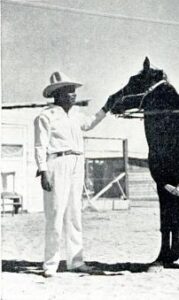
Nolie Ben Murray. Ebony Magazine Feb. 1947.
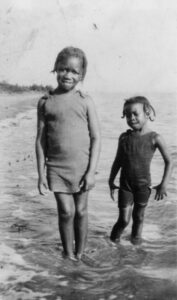
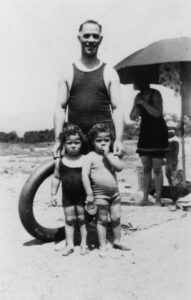
Two photos of young children and a family enjoying Lake Elsinore in swim suits, late 1920s and early 1930s. Photos courtesy of Shades of L.A. Collection.
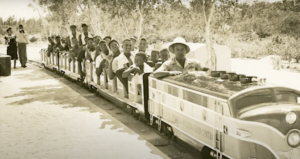
Photo from Historic Virginia Key Beach Park.
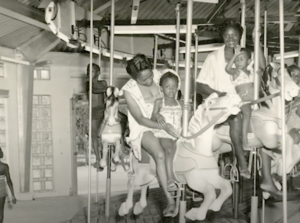
Photo from Historic Virginia Key Beach Park.
Photo from University of North Florida Special Collections, Eartha M.M. White Collection.
Photo from University of North Florida Special Collections, Eartha M.M. White Collection.
Judge Lawson Thomas was born in 1898 in Ocala, Florida. He received his undergraduate degree from Florida A&M University, and became the first Black man to earn his graduate degree from University of Michigan’s Law School. He began practicing law in Detroit, then Jacksonville, and finally in Miami where he opened his law firm in 1935. During his career he fought for the rights of Black voters, teacher’s salaries, and representative juries. In 1950, he was appointed judge of Miami’s Negro Police Court.
Photo from the King of Clubs of Greater Miami.
Photo from Historic Virginia Key Beach Park.
“Miss American Beach Pageant.” Photo from University of North Florida Special Collections, Eartha M.M. White Collection.
A.L. Lewis was born in 1865 in Madison County, and moved to Jacksonville in 1876. In 1901, he founded The Afro-American Life Insurance Company, originally called The Afro-American Industrial and Benefit Association. In 1920, A.L. Lewis founded the Afro-American Pension Bureau and by 1935 he was purchasing property through the AALIC to open American Beach.
“Portrait of Abraham Lincoln Lewis and Mary Frances Sammis.” Photo from University of North Florida Special Collections, Eartha M.M. White Collection.

Photo from University of North Florida Special Collections, Eartha M.M. White Collection

“Amusement and picnic grounds, Sparrow’s Beach, Inc., Annapolis, Maryland.” Photo courtesy of the Boston Public Library. https://www.digitalcommonwealth.org/search/commonwealth:w95055547
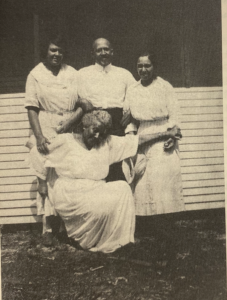
W.E.B. Dubois is a sociologist, historian, and Pan-Africanist civil rights activist. After creating the official journal “The Crisis” in 1910 Dubois became inspired to vacation at Idlewild by reading a winning essay titled, “The Best Summer Ever”. After vacationing at the resort becoming close friends to other historical people such as Violette Anderson (pictured beside Dubois on the right), Dubois purchased land and wrote about his experience at the resort making Idlewild nationally known. Dubois purchased nine plots of land and owned a home overing-looking the water, he is seen basking in the refreshing water and walking in the woods in historical photos taking in Idlewild’s beauty
“Evelyn Casey, Dr. W.E.B Du Bois, and attorney Violette N. Anderson standing as Carrie Warner kneels down in front of them beside her newly constructed summer cottage near Idlewild Lake.” (Courtesy of Barbra Collins Johnson.)
Stephens, Ronald J. “Idlewild: The Rise, Decline, and Rebirth of a Unique African American Resort Town.” University of Michigan Press, 2013.
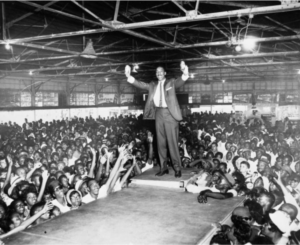
“Hoppy Adams on stage with arms extended waving to the crowd at Carr’s Beach.” MSA SC 3544-1-51 photographed by Thomas R. Baden, Jr., c. 1960. Photo courtesy of the Maryland State Archives.

“Carr’s Beach Benghazi Room Performance.” Photo courtesy of Blacks of the Chesapeake. Maryland State Archives. https://collections.digitalmaryland.org/digital/collection/mbcb/id/323/rec/111
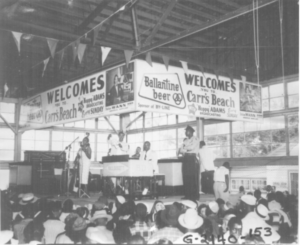
“Baden, Thomas Jr. Carr’s Beach, Hoppy Adams Show.” Accession No.: MSA SC 2140-1-153. Photo courtesy of Maryland State Archives.

“Carr’s Beach Water Activities.” Photo courtesy of Blacks of the Chesapeake. Maryland State Archives. https://collections.digitalmaryland.org/digital/collection/mbcb/id/299/rec/99

Photo courtesy of Banneker-Douglass Museum, Thomas Baden Collection 1993.1.253
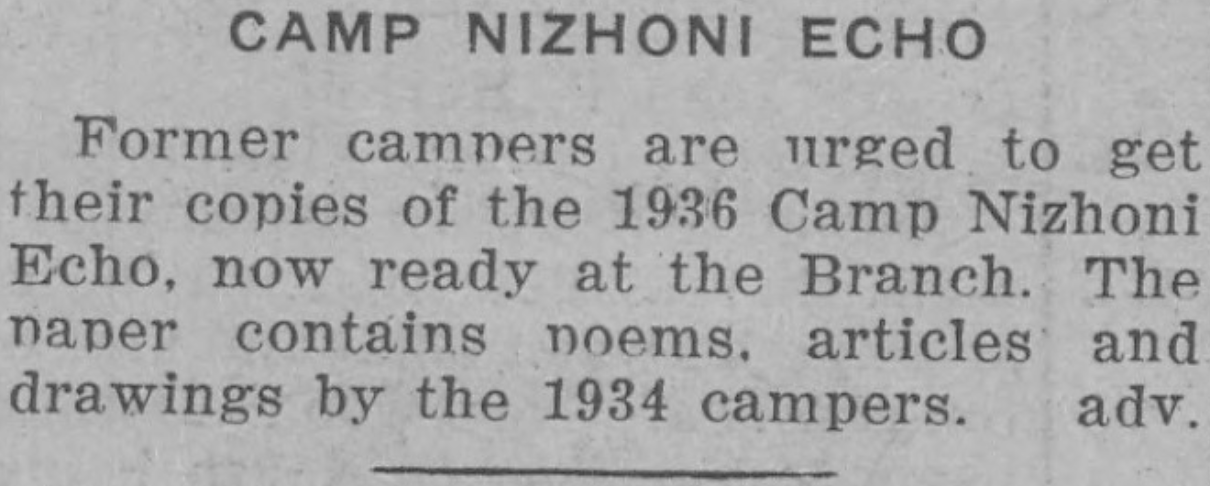

The Five Points neighborhood was home to the Black community of Denver as early as the 1890s, and was often referred to as the “Harlem of the West.”2 Many Lincoln Hills patrons resided in Five Points.
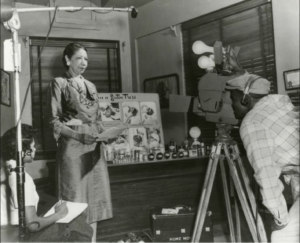
Violet Reynolds was the secretary for the Madame C.J. Walker Hair Company. She was hired in her teens, and eventually became the executive director. She was based out of the Indianapolis location that opened in 1927. The close proximity of Indianapolis allowed her to travel to Fox Lake with her family in 1927.
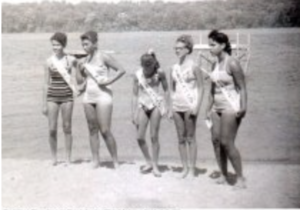
The Sharkettes were a group of young women swimmers. They would participate in swimming competitions and were quite the models.

The Sharks were the swimming group for the young men of Fox Lake. Similar to the Sharkettes, they often participated in swimming competitions. Pictured are the original sharks from the summer of 1951.
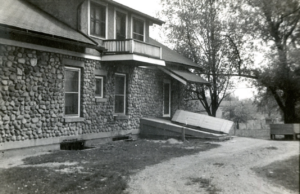
Pryor’s Country Place, listed as Pryor’s Lodge, was a bed and breakfast on the lake. Although drinking was illegal, supposedly, supposedly there was a still down by the lake that pumped alcohol up to Pryor’s so it could operate as a speakeasy.
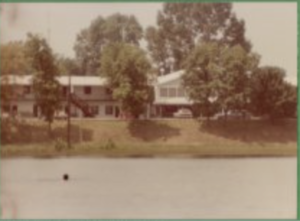
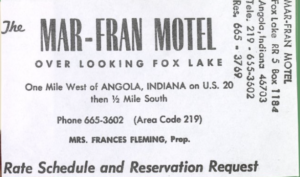
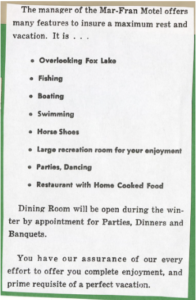
Photos from the Indiana Album
A two-story, forty-room motel on the lake. The motel was destroyed by fire in 1966.
Carl Wilson Sr. is known as the “father of Fox Lake.” He built the first cottage on Fox Lake for him and his wife, Mamie, along with two of the other first cottages. His son, Carl Wilson Jr., now owns one of the cottages and is dedicated to preserving the life of the resort.
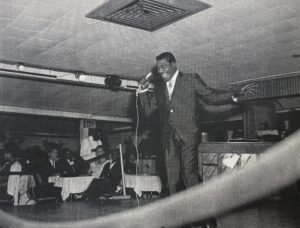
Benjamin Franklin Peay, known as Brook Benton, was a singer and songwriter popular in genres such as rock and roll, rhythm and blues, and pop. Known for songs such as “It’s Just A Matter of Time” and “Endlessly” he was well known in the late 1950s and early 1960s. He wrote songs for other artists such as Nate King Cole and Roy Hamilton.
“Brook Benton performing on stage in the Fiesta Room”
Stephens, Ronald J. “Idlewild: The Rise, Decline, and Rebirth of a Unique African American Resort Town.” University of Michigan Press, 2013.
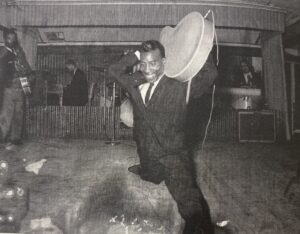
Aaron Thibeaux “T-Bone” Walker was a blues musician, composer, songwriter, and bandleader. He pioneered and created the jump blues, West Coast blues, and electric blues sound. T-Bone was inducted into the Blues Hall of Fame in 1980 and Rock and Roll Hall of Fame in 1987. He influenced generations of musicians and blues artists that would make their own stamp in history such as B.B. King, Chuck Berry, Jimi Hendrix who famously imitated Walker’s trick of playing the guitar with his teeth, Steve Miller, and Jethro Tull. T-Bone is known as the godfather of the modern electric blues guitar.
“T-Bone Walker Sr. doing the splits on stage in the Fiesta Room with electric guitar behind his head as T-Bone Walker Jr. plays and looks on in the background on the left.”
Stephens, Ronald J. “Idlewild: The Rise, Decline, and Rebirth of a Unique African American Resort Town.” University of Michigan Press, 2013.

Jack Leroy Wilson Jr. known as “Mr. Excitement” was known from the 1950s-1960s for the transition of rhythm and blues into soul. He was considered a master showman and had the most dynamic singer and performer in soul, R&B, and Rock and Roll history. He was inducted into the Rock and Roll Hall of Fame in 1987 and the National Rhythm and Blues Hall of Fame. He was honored with the Rhythm and Blues Foundation’s Legacy Tribute Award in 2003 and in 2004 was ranked No. 69 on the list of the 100 Greatest Artists of All Time. Artists have honored his legacy such as Micheal Jackson and Van Morrison.
“Jackie Wilson, aka ‘Mr. Excitement’, performing on stage in the Fiesta Room”
Stephens, Ronald J. “Idlewild: The Rise, Decline, and Rebirth of a Unique African American Resort Town.” University of Michigan Press, 2013.
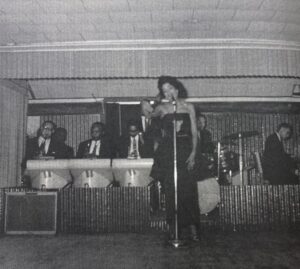
Delloreese Patricia Early, known as Della Reese, was a jazz and gospel singer, actress, and ordained minister spanning seven decades. She began her long career in the 1950s as a gospel, pop and jazz singer with songs “And That Reminds Me”, “Someday (You’ll Want Me to Want You”, and hit song “Don’t You Know?” selling one million copies and rewarded a golden disc by the RIAA. She went on to become a well-known actress on the hit TV Program “Touched By An Angel”. She inspired Motown singer Martha Reeves and was inducted into the Rhythm and Blues Music Hall of Fame in 2017.
“Della Reese performing on stage in the Fiesta Room”
Stephens, Ronald J. “Idlewild: The Rise, Decline, and Rebirth of a Unique African American Resort Town.” University of Michigan Press, 2013.
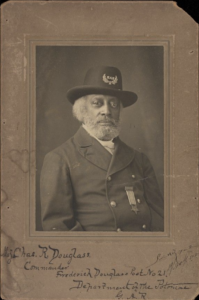
Charles Douglass was born to Frederick Douglass and Anna Murray on October 21, 1844 in Lynn, Massachusetts. He started his career as a member of Company F of the 54th Massachusetts Volunteer Infantry during the Civil War. The company was one of the first official Black units in the U.S. Armed Forces. He moved onto Sergeant and then 1st Sergeant of the 5th Massachusetts Cavalry. During his time, he was wounded in the assault on Fort Wagner in 1863. In 1864, he was released on special order due to an issue with his lungs. By 1867, his family had moved to Washington D.C., where he was employed as a clerk in the Freedmen’s Bureau, then the Treasury Department, and later on, other federal agencies. In 1872, he was appointed as a trustee for the District of Columbia Schools and helped employ the first African American teachers and assured their equal pay. There were many other achievements he made during his lifetime leading up to the purchasing of Highland Beach in 1893 that shaped the outcome of the beach. His life experiences set him up to protect people like himself and make sure they had space for leisure in segregated America.
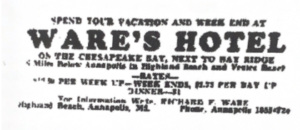
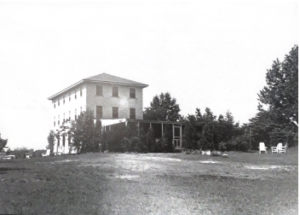
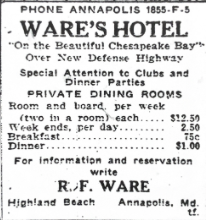
Advertisements for the Ware’s Hotel pictured in the center.
Photos from the Highland Beach Historical Collection
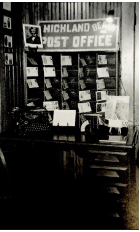
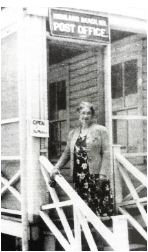
Photos of the Highland Beach Post Office. On the right is Fannie Douglass pictured on the steps.
Photos from the Highland Beach Historical Collection

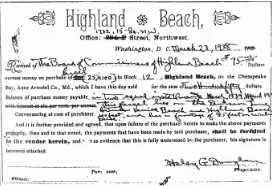
Photo of the original Carekeeper’s House and the official document certifying the parcel of land.
Photos from the Highland Beach Historical Collection
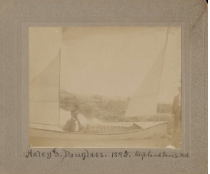
Haley Douglass was the son of Charles and Laura Douglass and grandson of Frederick Douglass. He grew up spending his summers at the beach, where he later served on the town committee and eventually became mayor in 1923.
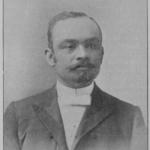
Dr. John R. Francis was a doctor famous for owning the first private hospital for people of all races. He received his undergraduate degree from Howard University and his medical degree from the University of Michigan. He became a part of Highland Beach history in 1896, as he was one of the first few to purchase a lot and build a home.

George T. Bowen was known for serving in the navy as a mess boy (someone who maintains the officer’s quarters and waits on tables) after being born a slave. When his service ended he became a steward at the Athenaeum Club located in Baltimore. He became part of Highland Beach history in 1895 and played a crucial role in the growth of Highland Beach after being personally asked by Charles Douglass to build a guesthouse, making him the first to own a large enough cottage to host groups at the beach.
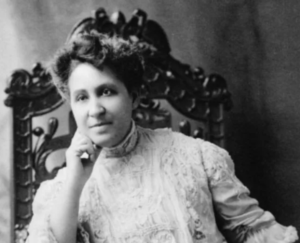
Mary Church Terrell was one of the first Highland beach residents, with her house situated close to her friend, Frederick Douglass. She was a member of the Highland Beach Charter Committee, but prior to moving to Highland Beach, she had many notable achievements. Mary Church Terrell was one of the first Black women to graduate college and obtain a master’s degree, both from Oberlin College. She spent her life as an activist for racial equality and women’s suffrage by advocating and becoming a member in multiple organizations, including the NAACP.
This is only a brief look at Mary Church Terrell. To learn firsthand about her experiences, she has an autobiography, A Colored Woman in a White World, which will connect you to her personal story.
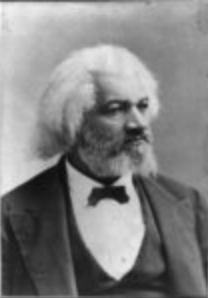
Frederick Douglass was born a slave in approximately 1818, which was based on his judgment because there was no record of his birth. He spent the early years of his life as a slave and attempted to escape multiple times. In 1838, he successfully escaped with the help of Anna Murray, who later becomes his wife. Post-freedom, he became well known as an abolitionist, and even helped slaves escape through the underground railroad.
This is not even close to the amount of achievements Frederick Douglass had in his lifetime! To learn more, Narrative of the Life of Frederick Douglass, was his first autobiography, where he tells his personal story.
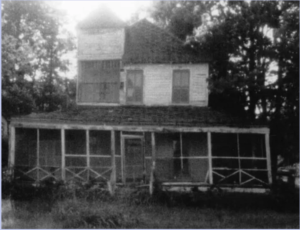
“Twin Oaks” was the second house to be built on Highland Beach for Frederick Douglass. The house was specifically placed on a lot that overlooked the Eastern Shore where he was previously enslaved. The house was restored in the 1990’s and currently serves as the town’s historical museum.
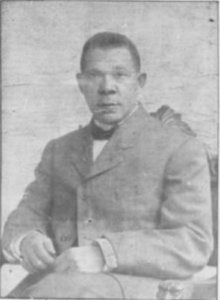
Picture of Booker T. Washington featured in The Washington Bee. The Washington Bee was a Black newspaper that survived until the 1920s. The newspaper featured stories of Black people, and in some cases like this, write about their time at Highland Beach!
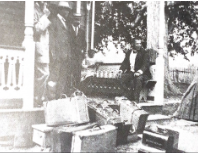
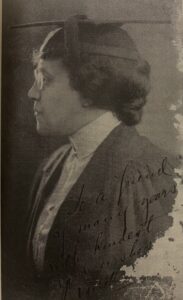
Violette N. Anderson was the first African American woman to practice law before the United States Supreme Court in 1926. She served in the National Association of Women’s Club, the National Council of Negro Women, the Friendly Big Sisters League of Chicago, and Zeta Phi Beta Sorority. She was one of the woman in charge and the cause of the elevated status of the Idlewild Lot Owners Association that looked over the lots owned in Idlewild. Anderson owned lots of her owned that she would later give to the Zeta Phi Beta Sorority.
“Violette Neatley Anderson, the first woman in the state of Illinois to graduate from law school and to pass the bar, the first prosecutor, and the first woman to argue a case before the U.S. Supreme Court. The photograph is dedicated to Carrie Warner. Anderson writes, ‘to a friend of many years with kindest good wishes, Violette’” (Courtesy of Barbra Collins Johnson.)
Stephens, Ronald J. “Idlewild: The Rise, Decline, and Rebirth of a Unique African American Resort Town.” University of Michigan Press, 2013.
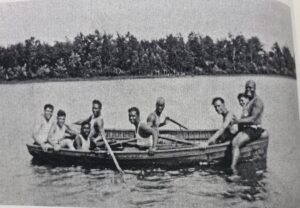
Louis Armstrong, nicknamed “Satchmo” or “Pops” was a trumpeter and a vocalist. He was the most influential figure in jazz having a career that spanned five decades and several eras in jazz history. Louis and his wife Lillian Armstrong (pictured beside him) who was jazz pianist, composer, arranger, singer, and bandleader who would collab with him in his songs would vacation to Idlewild on the weekends with friends. He would recall his summer trips to Idlewild in “Swing That Music“, his first autobiography , stating, “the weekends I could get off we went to Idlewild and this was the most exercise, and the best, I remembered- although you might say blowing a trumpet is exercise all of the time.”
” Louis and Lillian Armstrong, Earl Hines, and other musician associates in a rowboat on Idlewild Lake, ca 1928” (Courtesy of Chris Albertson)
Stephens, Ronald J. “Idlewild: The Rise, Decline, and Rebirth of a Unique African American Resort Town.” University of Michigan Press, 2013.